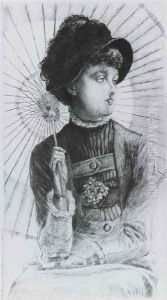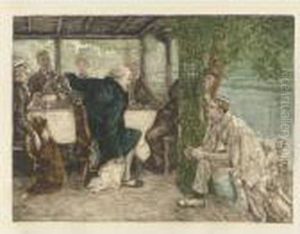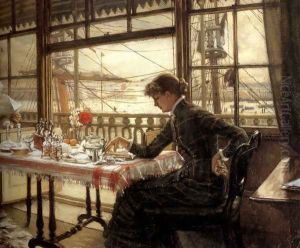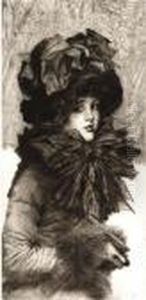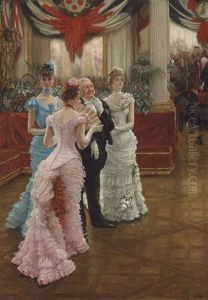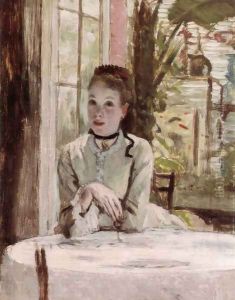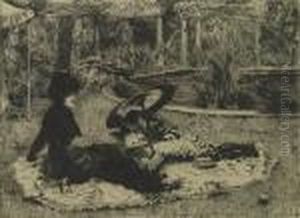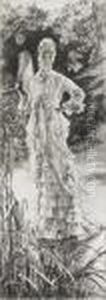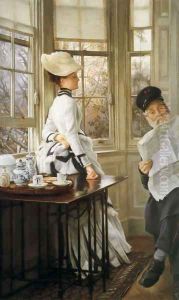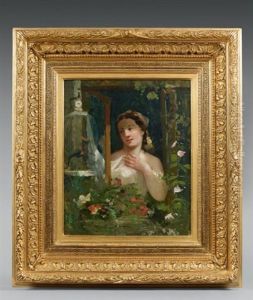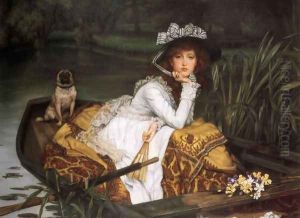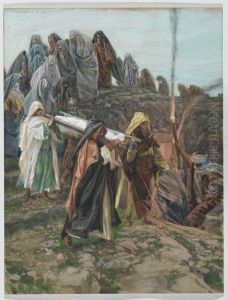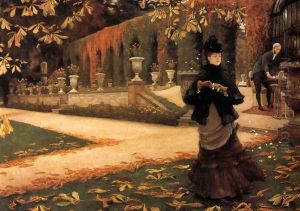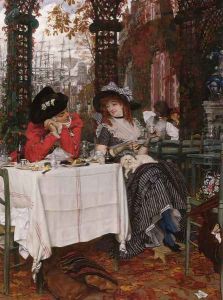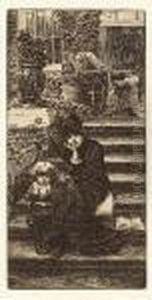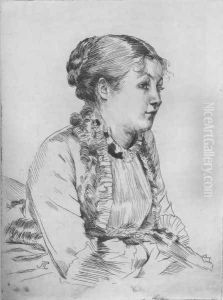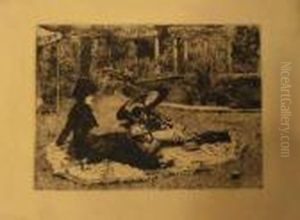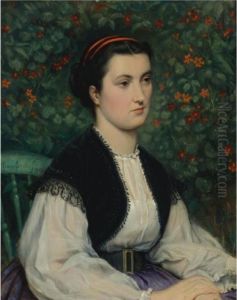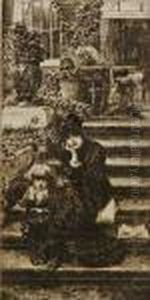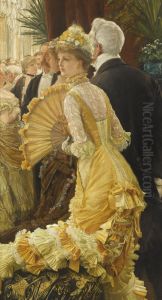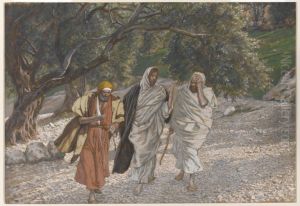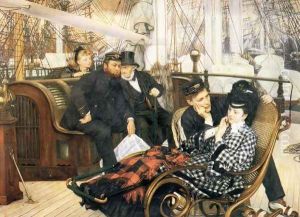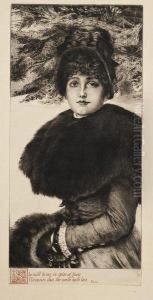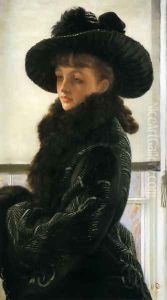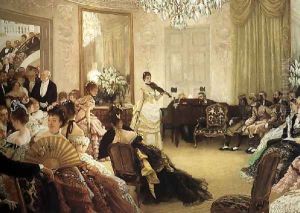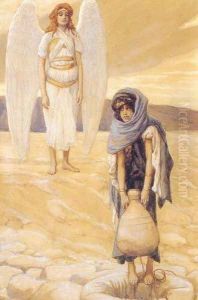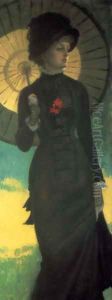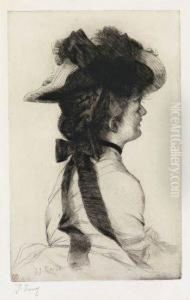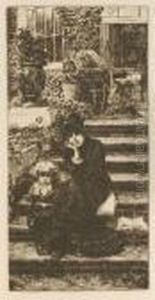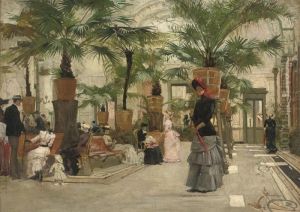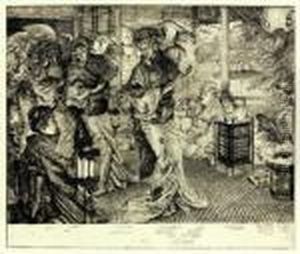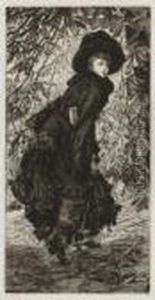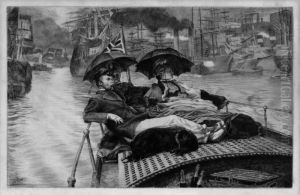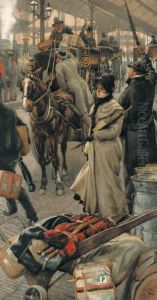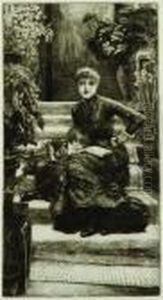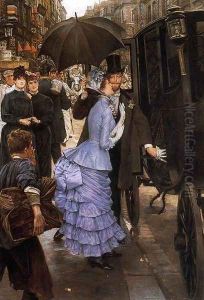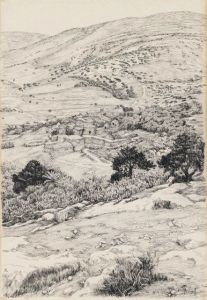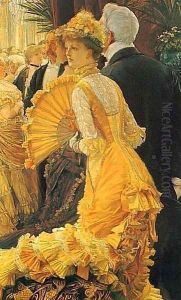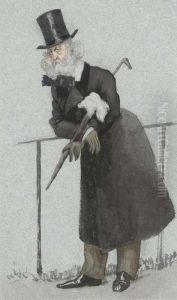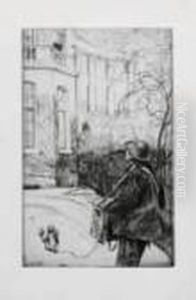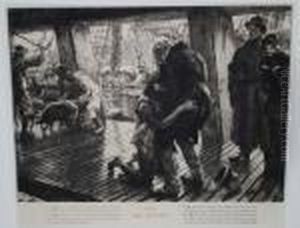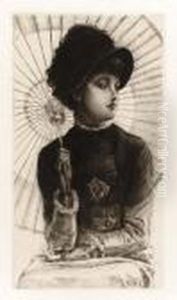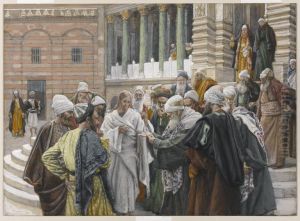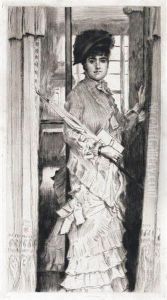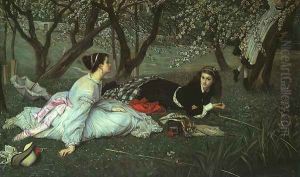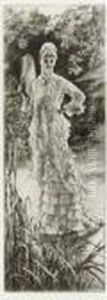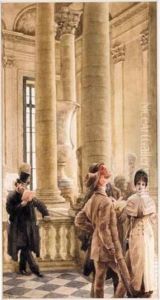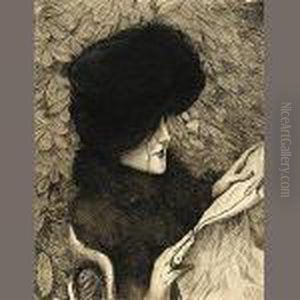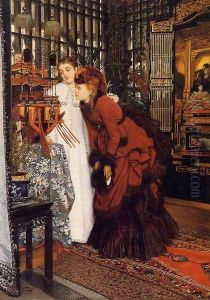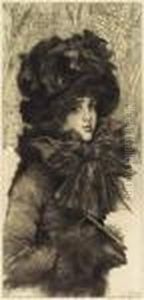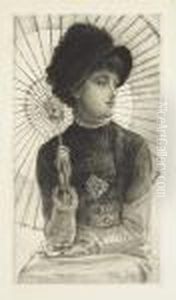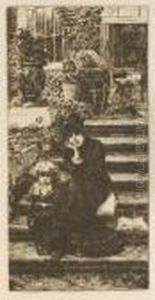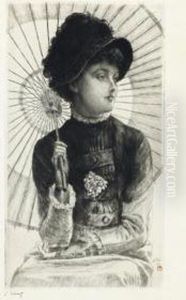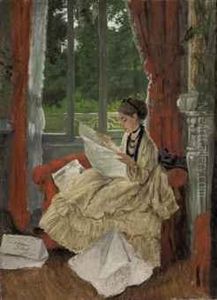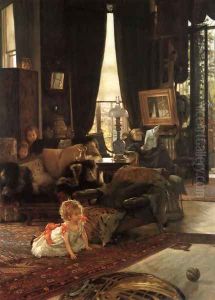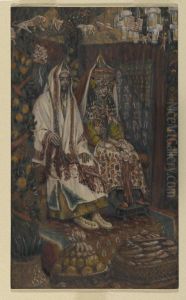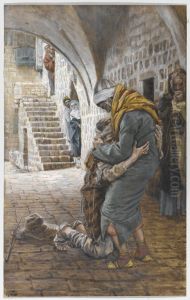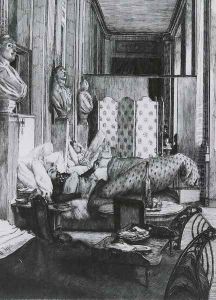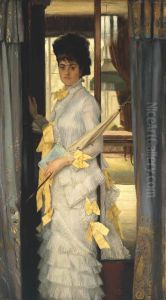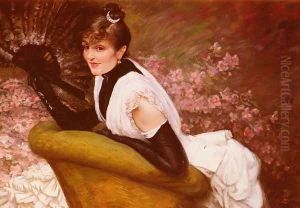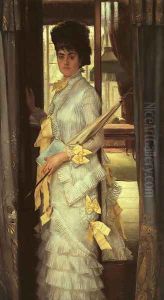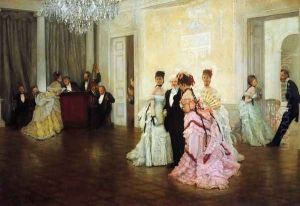James Jacques Joseph Tissot Paintings
James Jacques Joseph Tissot, known commonly as James Tissot, was a French painter and illustrator who lived from October 15, 1836, to August 8, 1902. Tissot was born in Nantes, France, and was a contemporary of the French Impressionists; however, his style often fluctuated between academicism, realism, and impressionism, reflecting his eclectic artistic interests.
Tissot received his early education at Jesuit schools, but his burgeoning interest in art led him to move to Paris at the age of 19 to pursue his artistic career. He studied at the École des Beaux-Arts under the tutelage of the influential French painters Hippolyte Flandrin and Louis Lamothe, who had both studied under the classical artist Jean-Auguste-Dominique Ingres. Tissot began exhibiting at the Paris Salon in the late 1850s and gained early recognition for his meticulous genre paintings depicting the Parisian bourgeoisie.
In the early 1870s, Tissot's life and work underwent significant changes. He fought in the Franco-Prussian War and, after the Commune of Paris, moved to London to avoid the political turmoil in France. During his time in England, Tissot enjoyed considerable success, particularly with his paintings of fashionable society and scenes of social life in London. He also became a close associate of the British painter, James McNeill Whistler, and was briefly associated with the Pre-Raphaelite circle.
Notably, Tissot's work during his London period is characterized by a keen observation of social interactions and a fascination with the details of contemporary costume. His depictions of Victorian life are often imbued with a narrative quality and a subtle commentary on the roles and relationships within society.
The 1880s marked a turning point for Tissot when he experienced a spiritual revival after the death of his companion, Kathleen Newton, who had a profound influence on his life and art. Following this personal tragedy, Tissot returned to France and embarked on a series of religious paintings, including the ambitious 'The Life of Christ' project, which was well received by the public and critics alike.
Despite this later focus on religious subjects, Tissot's legacy largely rests on his perceptive social scenes and his acute ability to capture the nuances of contemporary life. His detailed and often opulent representations of the late 19th-century leisure class provide a valuable visual record of the era's social customs and fashions. Tissot died on August 8, 1902, in Chenecey-Buillon, France, leaving behind a diverse and rich body of work that continues to be studied and appreciated for its artistic merit and historical significance.

